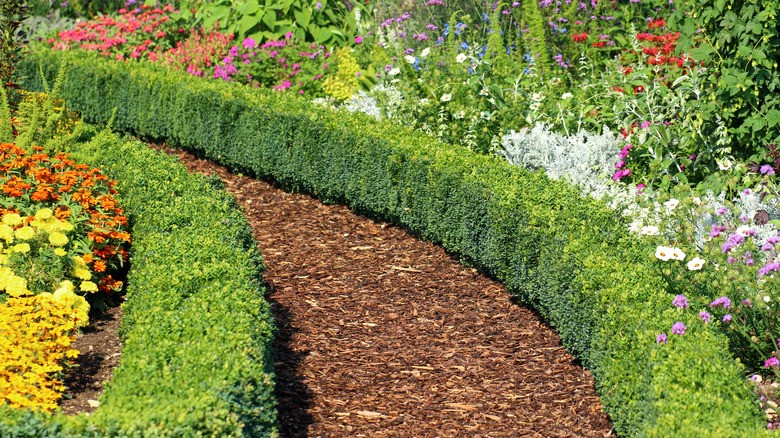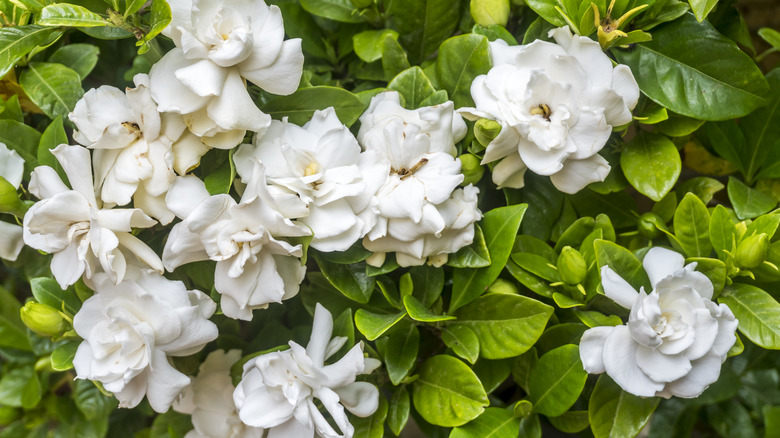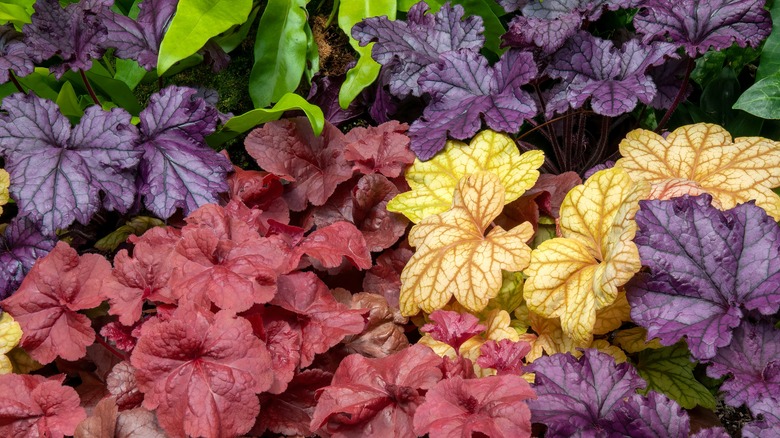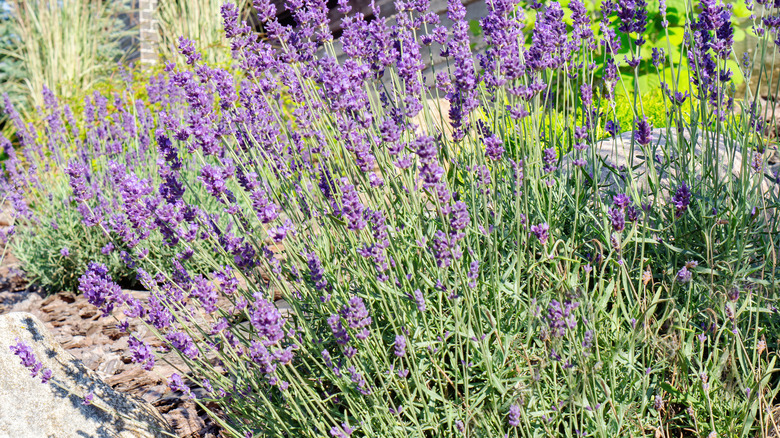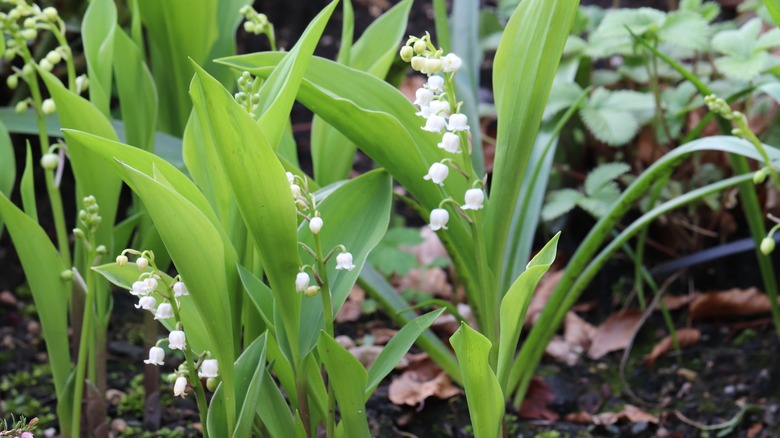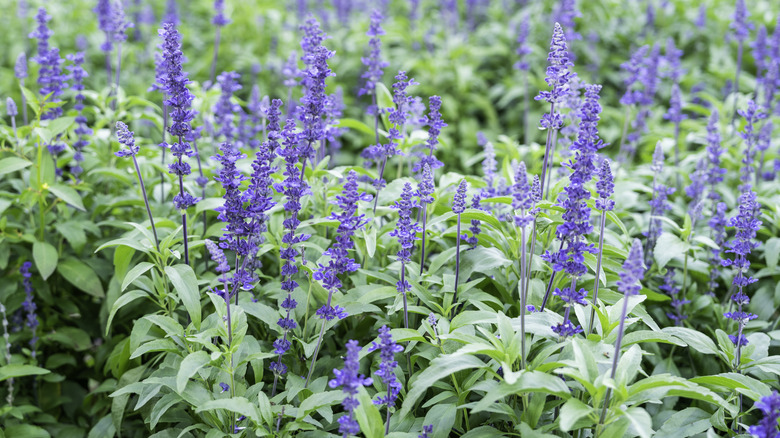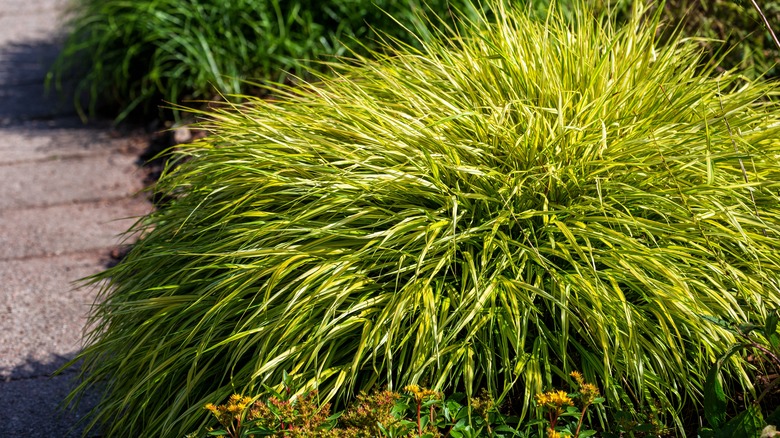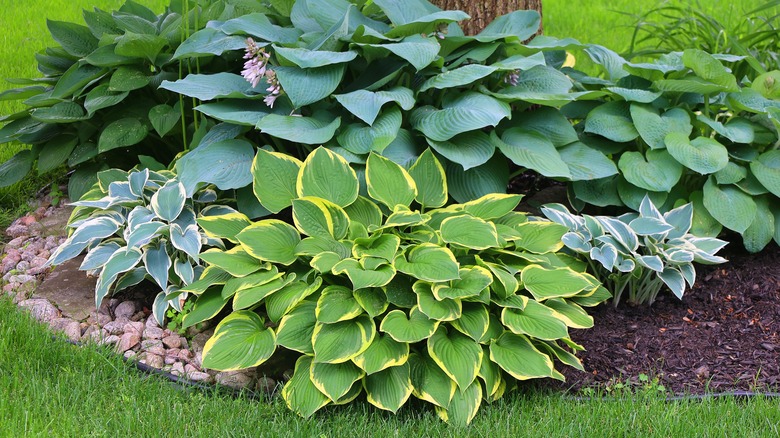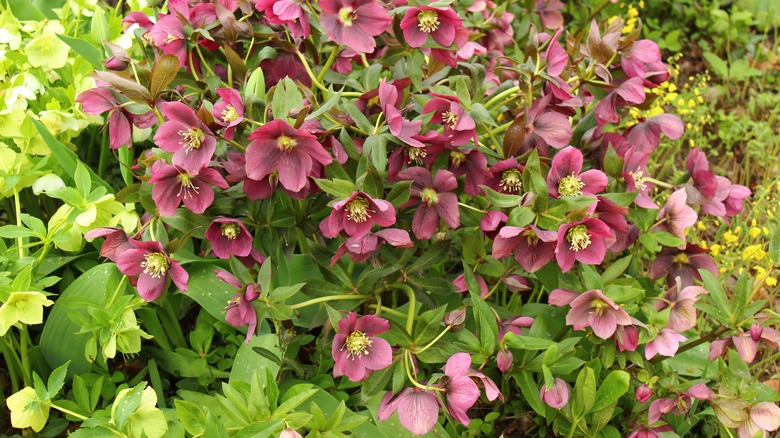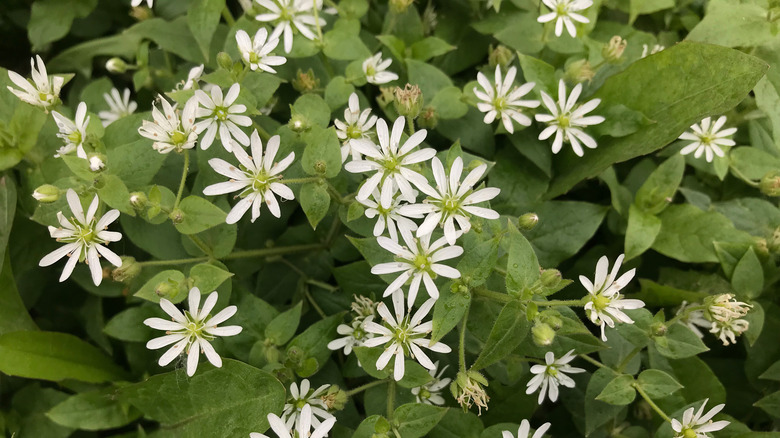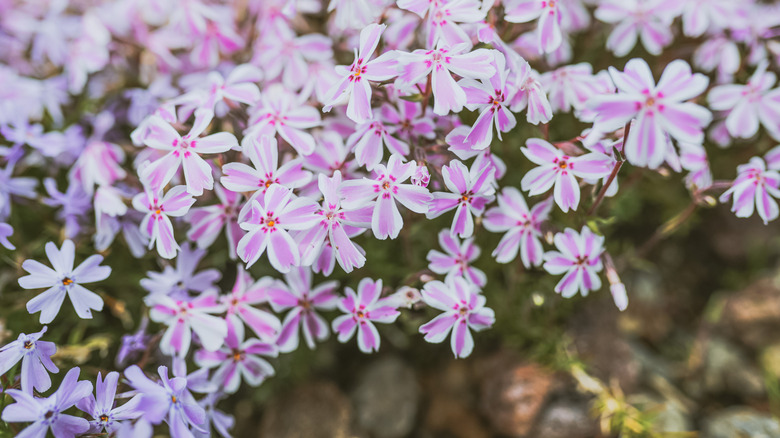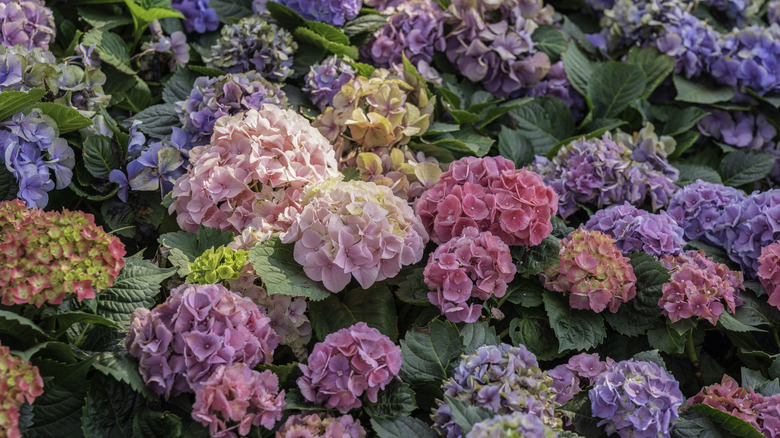The 11 Best Companion Plants For Your Boxwoods
Boxwoods are classic evergreen shrubs that make your landscape look great all year. The shrub's compact, symmetrical foliage is great for adding privacy and curb appeal to your outdoor space. You can't go wrong with this evergreen, whether you let the leaves grow as they please or trim them into topiary, like cones or spirals. Boxwood's look and low-maintenance nature make it a hit all on its own, but the more plants, the merrier, right? Adding companion plants with the evergreen can add color, texture, and depth to your space. It might even lure more pollinators to your home. We have various flowers and ornamental grasses perfect to pair with your boxwood shrubs.
Since boxwoods tolerate different soils, drought, and shade conditions, several different plant species can grow alongside the evergreen. The mixture of colorful petals and striking blades complement and/or contrast the boxwood to ornament your garden. Even if you use boxwood as a garden edge, privacy hedge, or container shrub, adding a companion plant can make your garden more dynamic and vibrant.
Gardenias
Gardenias have glossy, dark, shrub-like foliage that will blend well with boxwoods. Plus, its white flowers will add a striking pop. These flowers are perfect for those who want a vibrant garden element but don't care for colorful plants. They also add a sweet fragrance to your outdoor space. Gardenias prefer acidic soil, so a pH of around 6.5 will suit both evergreens. While boxwoods and gardenias are compatible, it's best to space them with enough room for air circulation. This helps with pest control and allows the flower's perfume to diffuse. They grow best in USDA zones 7 to 11 with partial sunlight.
Coral bells
For perennial ground cover to border your boxwood shrubs, coral bells (Heuchera) are the answer. The distinct shape and colors of its leaves will stand out against the dark green boxwoods. It is a great low-maintenance way to spice up a live privacy wall or hedge. The foliage is what coral bells are mainly planted for, but the species also sprouts flowers that attract bees, hummingbirds, and butterflies. They are hardy in zones 3 to 9, favoring full sun for the most vibrant leaves.
Lavender
Lavender (Lavendula) is one of the easiest plants to grow for beginner gardeners and a lovely companion for boxwoods. The purple flowers are gorgeous, smell heavenly, and attract pollinators. You can use the herb as edging for your boxwood and even shape the lavender into a mini hedge to add dimension. This plant is hardy in USDA zones 5 to 9 and needs full sun and well-drained soil. Lavender doesn't like the shade, so you don't want to plant these flowers in the boxwood's shadow. Once the flowers are established, the plant will be drought-resistant, and you can enjoy the evergreen foliage and bright petals.
Lily of the valley
If you want to bring your boxwood shrubs to life, the lily of the valley (Convallaria majalis) is a suitable companion plant. Its bell-shaped flowers are attention grabbers, while its thick foliage contrasts boxwood's tiny leaves. Since the lily of the valley is a ground cover crop, it only sprouts 10 inches high. So, it's ideal to border the shrub and add a layer of unique flowers that won't completely mask your boxwood hedge. It grows best in USDA zones 3 to 7, with well-drained soil. However, be mindful that the lily of the valley is poisonous to cats, dogs, and horses.
Salvia
Salvia flowers come in a variety of colors, with blue, purple, pink, red, white, and yellow petals. Some species can reach 6 feet tall in one growing season, while others max out at 12 inches. Any variety would look stellar near your boxwoods. The long-blooming flowers attract bees, butterflies, and hummingbirds. Plus, the aromatic leaves waft your garden with fresh scents. Salvia prefers full sun and well-drained soil. It is most hardy in USDA zones 5 to 10. Salvia is drought-tolerant, so it's better to underwater it than to overwater it.
Hakone grass
For a subtle look, Hakone grass (Hakonechloa macra) is a great companion plant for boxwoods. Its wispy, light green grass blades contrast against boxwood's small dark green leaves. Further, as autumn nears, the grass takes a rosy hue. You get a colorful dimension in your yard without showy flowers or trailing vines. Hakone grass grows best in USDA zones 5 to 9. It's a low-maintenance crop that likes shade and moist, well-drained soil. It doesn't like dry, clay soil or harsh heat. Those elements can hamper the perennial grass' growth.
Hostas
There are several hosta varieties to complement your boxwood shrub. Dwarf cultivars, only 4 inches tall, are great near boxwoods in containers, while giant varieties surpassing 2 feet can spruce up a boxwood privacy wall. Most hostas are sought after for their foliage, but the plants also grow stunning flowers that attract bees, butterflies, and hummingbirds. However, this is another plant toxic to cats, dogs, and horses if ingested. Hostas add visual appeal to your outdoor space. Grow them in zones 3 to 9 with well-drained soil and partial sunlight.
Lenten rose
Lenten roses (Helleborus orientalis) bloom in the late winter, sprucing up your boxwoods early in the growing season. The glossy evergreen leaves and large cup-shaped flowers will surely add drama to your garden. Petals vary from cool blues to warm reds. With partial shade and moist, well-drained soil, the lenten roses should flourish. It's a great companion plant that attracts pollinators but is a toxic snack for cats, dogs, and horses. USDA hardiness zones 4 to 9 get the pleasure of growing these statement flowers.
White wood aster
White wood aster (Eurybia divaricata) is a beautiful wildflower that will add an organic look to clean-cut boxwood shrubs. Bees and butterflies love the flowers, making it another stellar plant to attract pollinators to your garden. Further, as the flowers produce seeds, birds and small mammals come to feast. It's not just the crown of petals that makes white wood aster a winner but also its stunning heart-shaped leaves. This wildflower prefers partial shade and dry, well-drained soil. It is hardy in zones 3 to 8 and drought tolerant.
Creeping phlox
Creeping phlox (Phlox stolonifera) produces a thick spread of pink and purple flowers. The compact petals mimic the tight concentration of boxwood's leaves. They're perfect for decorating your evergreen if you prefer flowers over foliage. The blanket of petals attracts hummingbirds, butterflies, and bees. You might even spot rabbits nibbling the spikey leaves. Grow creeping phlox as perennials in hardiness zones 3 to 9. This plant favors acidic soil, so the lowest pH your boxwoods can handle is the best soil for these plants to grow together.
Hydrangeas
To close off our list, we have the popular and, of course, gorgeous flower, hydrangea (Hydrangea macrophylla). Its round clusters of flowers will add dimensions to your boxwoods, especially if they're trimmed into topiary. Acidic soil produces blue flowers, while alkaline soil encourages pink blooms. Either color will pair well with boxwoods. Full sun to part shade, moist soil, and weekly waterings are best for your hydrangeas to thrive. These fast-growing flowers should give you a beautiful garden and enhance your boxwoods in no time.
